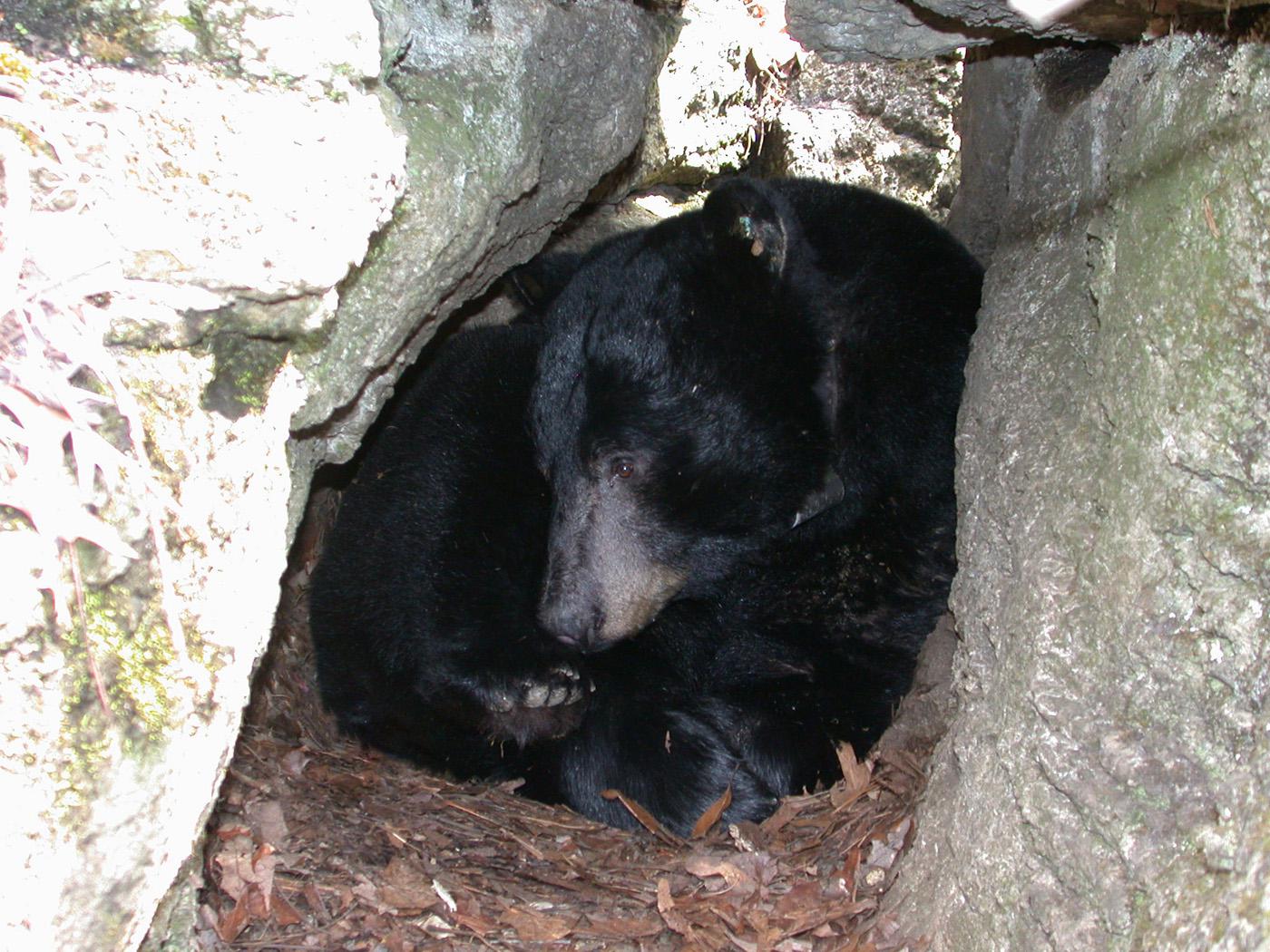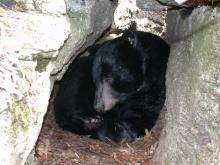Information Possibly Outdated
The information presented on this page was originally released on November 22, 2011. It may not be outdated, but please search our site for more current information. If you plan to quote or reference this information in a publication, please check with the Extension specialist or author before proceeding.
MSU scientists search for bears in Missouri
MISSISSIPPI STATE – Scientists at Mississippi State University are working with biologists in Missouri’s Ozarks to get the “bear” facts on one of the largest mammals in the Southeast.
The Missouri Black Bear Project, which will be completed next year, is expected to provide valuable information on estimating populations in Mississippi. A study by scientists in the MSU Forest and Wildlife Research Center in the late 1990s indicated more than 70 percent of Mississippi residents favored increasing the black bear population.
While the goal of the Missouri project is to determine the current size of the state’s bear population, MSU scientists hope to refine their techniques in estimating populations. They also want to learn how bears use areas within their home ranges and colonize large expanses of unoccupied habitat.
The Missouri Black Bear Project is a collaboration between the MSU Forest and Wildlife Research Center, the University of Missouri, the Missouri Department of Conservation and Safari Club International Foundation.
Jerrold Belant, associate professor of wildlife ecology and management, leads the MSU effort. He said the information and skills gained in this study can be applied to the statewide bear management program begun in 2002 by the Mississippi Department of Wildlife, Fisheries and Parks.
“We clearly have black bears in Mississippi, but we do not know how many,” Belant said. “Missouri has a similar situation, with even more black bear sightings and reports than Mississippi, but no one has a good population estimate.”
To estimate population size, researchers lure bears to specific areas where samples can be collected.
“Hair snares were constructed by using a strand of barbed wire to encircle small areas of at least three trees where bears have been seen, based on 20 years of sightings and reports of bears in the southern portion of Missouri,” Belant said. “Bears are lured to the enclosed areas with fish oil and other scents, and samples of their hair are collected.”
Approximately 380 hair snares were placed in areas thought to have been frequented by black bears during the summer months. Clay Wilton, a student in the MSU Department of Wildlife, Fisheries and Aquaculture, and field technicians checked the snares every 10 days to collect samples.
“Hair samples caught in the snares were sent to the University of Missouri for DNA profiling,” Wilton said. “Genotyping through DNA analyses allows us to identify individual bears, which we can use to estimate how many are in the area.”
Motion-activated cameras placed at select snares also monitor the activity of bears entering the sites. This data helps assess how effective the snares are.
Biologists also use doughnuts as bait to lure bears into steel culvert or barrel traps with drop doors that confine the animals. About 25 traps are placed, baited and monitored in the hills of the Ozark Mountains.
Global Positioning System, or GPS, collars are placed on bears that enter the baited traps.
“Thus far, the research crew has caught and released 49 bears. Thirty of them have been equipped with GPS collars,” Belant said. “The GPS collars allow us to track the bears and better understand their home range.”
While the project has just begun, preliminary results indicate that the bear population is not as big as Missouri residents thought. The study has also revealed similarities between the Mississippi and Missouri populations.
Bears were once abundant in Southern states, but populations are diminishing from overhunting and land conversion. Scientists suspect that most bears now residing in Missouri and Mississippi originated from restoration efforts in neighboring Arkansas and Louisiana. Arkansas has an estimated bear population of 3,500, while Louisiana’s population is estimated at 300.
In addition to the Missouri study, graduate students have been studying black bears in Mississippi since 2009.
“There are no official estimates of the number of black bears in Mississippi,” Belant said. “However, in early 2011, graduate students identified six females with cubs.”
This, along with the recent increase in bear sightings, suggests the population in Mississippi is growing. Most bears are in the Delta region and the extreme southeastern portion of the state, Belant said.
“Improving our methods to estimate populations and understanding the bears’ use of habitat will further strengthen our ability to effectively manage black bears in Mississippi,” Belant said.







